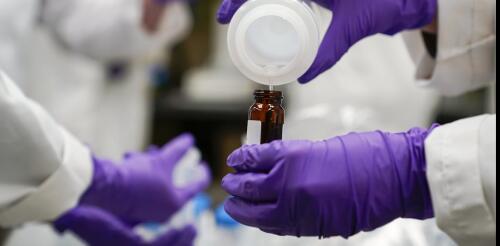Teflon
Chemists invented PFAS in the 1930s to make life easier: Nonstick pans, waterproof clothing, grease-resistant food packaging and stain-resistant carpet were all made possible by PFAS. But in recent years, the growing number of health risks found to be connected to these chemicals has become increasingly alarming. PFAS – perfluoroalkyl and polyfluoroalkyl substances – are now either suspected or known to contribute to thyroid disease, elevated cholesterol, liver damage and cancer, among other health issues. They can be found in the blood of most Americans and in many drinking water systems, which is why the Environmental Protection Agency in April 2024 finalized the first enforceable federal limits for six types of PFAS in drinking water systems. The limits – between 4 and 10 parts per trillion for PFOS, PFOA, PFHxS, PFNA and GenX – are less than a drop of water in a thousand Olympic-sized swimming pools, which speaks to the chemicals’ toxicity. The...
The more scientists learn about the health risks of PFAS, found in everything from nonstick cookware to carpets to ski wax, the more concerning these “forever chemicals” become. The U.S. Environmental Protection Agency now believes there is no safe level for two common PFAS – PFOA and PFOS – in drinking water, and it acknowledges that very low concentrations of other PFAS present human health risks. The agency issued the first legally enforceable national drinking water standards for five common types of PFAS chemicals, as well as PFAS mixtures, on April 10, 2024. I study PFAS as an environmental health scientist. Here’s a quick look at the risks these chemicals pose and efforts to regulate them. What exactly are PFAS? PFAS stands for per- and polyfluoroalkyl substances. This is a large group of human-made chemicals – currently estimated to be nearly 15,000 individual chemical compounds – that are used widely in consumer products and i...
PFAS chemicals seemed like a good idea at first. As Teflon, they made pots easier to clean starting in the 1940s. They made jackets waterproof and carpets stain-resistant. Food wrappers, firefighting foam, even makeup seemed better with perfluoroalkyl and polyfluoroalkyl substances. Then tests started detecting PFAS in people’s blood. Today, PFAS are pervasive in soil, dust and drinking water around the world. Studies suggest they’re in 98% of Americans’ bodies, where they’ve been associated with health problems including thyroid disease, liver damage and kidney and testicular cancer. There are now over 9,000 types of PFAS. They’re often referred to as “forever chemicals” because the same properties that make them so useful also ensure they don’t break down in nature. Facing lawsuits over PFAS contamination, the industrial giant 3M, which has made PFAS for many uses for decades, announced a US$10.3 billion settlement with public w...
The U.S. Environmental Protection Agency is preparing to release a draft regulation limiting two fluorinated chemicals, known by the abbreviations PFOA and PFOS, in drinking water. These chemicals are two types of PFAS, a broad class of substances often referred to as “forever chemicals” because they are very persistent in the environment. PFAS are widely used in hundreds of products, from nonstick cookware coatings to food packaging, stain- and water-resistant clothing and firefighting foams. Studies show that high levels of PFAS exposure may lead to health effects that include reduced immune system function, increased cholesterol levels and elevated risk of kidney or testicular cancer. Population-based screenings over the past 20 years show that most Americans have been exposed to PFAS and have detectable levels in their blood. The new regulation is designed to protect public health by setting an enforceable maximum standard limiting how much of the two target ch...



